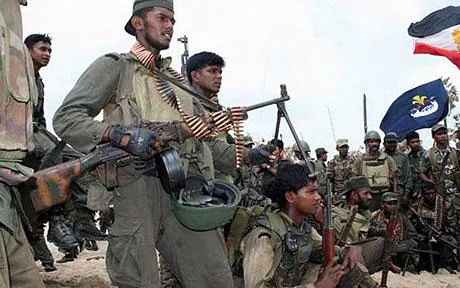moulddni0.com – The Sri Lankan Civil War, which spanned over three decades from 1983 to 2009, had profound and lasting effects on the country’s economy. This conflict, primarily between the government of Sri Lanka and the Liberation Tigers of Tamil Eelam (LTTE), seeking an independent Tamil state, resulted in significant economic challenges and setbacks. This article explores the multifaceted economic impact of the Sri Lankan Civil War, including the direct costs of the conflict, the effects on key sectors, and the long-term implications for economic development.
Direct Costs of the Conflict
The direct economic costs of the Sri Lankan Civil War were staggering. The war led to a substantial drain on public finances, as a significant portion of the national budget was allocated to defense spending. This diversion of funds from social and economic development projects to military purposes hindered the country’s economic growth potential. Additionally, the conflict resulted in the loss of thousands of lives, including many skilled workers, which further impacted the economy’s human capital.
Effects on Key Economic Sectors
Agriculture
The agricultural sector, a backbone of Sri Lanka’s economy, was severely affected by the civil war. The conflict disrupted farming activities, particularly in the northern and eastern regions, which were key agricultural zones. The displacement of farmers, destruction of crops, and damage to irrigation systems led to reduced agricultural output and food insecurity.
Tourism
Tourism, another vital sector for Sri Lanka’s economy, suffered significantly during the civil war. The conflict led to a decline in tourist arrivals due to safety concerns and negative international perceptions. This downturn in tourism resulted in lost revenue and job opportunities, particularly in coastal and rural areas dependent on the industry.
Foreign Investment
The civil war also deterred foreign investment in Sri Lanka. The prevailing instability and security risks made the country a less attractive destination for investors. This lack of foreign investment hindered the development of infrastructure and industries, further slowing economic growth.
Long-Term Implications for Economic Development
The long-term economic implications of the Sri Lankan Civil War are complex and far-reaching. The conflict exacerbated regional disparities, with the war-affected areas lagging behind in terms of development. Rebuilding these regions and integrating them into the national economy remains a significant challenge. Additionally, the war left a legacy of debt and a need for substantial investment in rehabilitation and reconstruction, which continues to strain public finances.
Conclusion
The economic impact of the Sri Lankan Civil War was profound and multifaceted, affecting every sector of the economy. The direct costs of the conflict, along with the disruption of key economic activities, had a detrimental effect on the country’s economic growth and development. While the end of the war in 2009 marked a turning point, the long-term implications for economic recovery and development are still being felt. Addressing these challenges requires concerted efforts to rebuild war-torn areas, promote inclusive economic growth, and ensure that the benefits of development are shared equitably across the nation.
